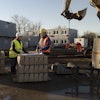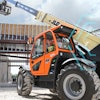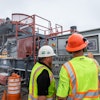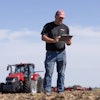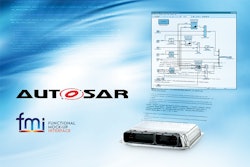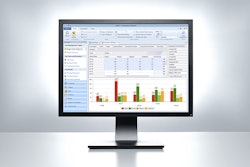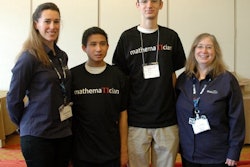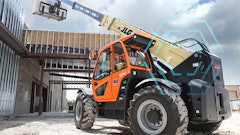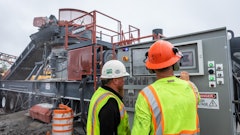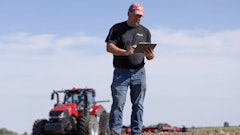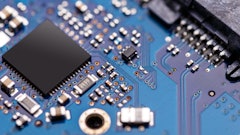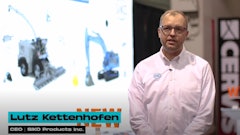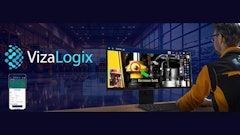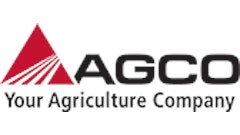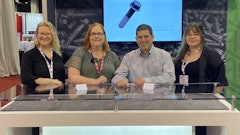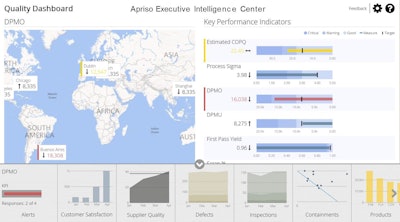
Today’s vehicles and equipment are more complex than ever due to the increased amount of electronics and software they now include. Advancements in sensor technology, along with its reduced cost, have played a large part in this. “You’re seeing an explosion in sensor technology and what it’s capabilities are,” says Fred Thomas, DELMIA Apriso Director, Discrete Manufacturing Industries at Dassault Systèmes.
The expanded capabilities these technologies provide are allowing vehicles to become smarter than ever and are leading the way toward driverless (or autonomous) vehicles.
However, the additional technologies found in these vehicles have also increased the complexity of the development process which Thomas says requires manufacturers to leverage a consistent design philosophy.
“A significant amount of complexity already exists for automotive manufacturers when incorporating the mechanical and electrical components of vehicles today. Now, things are getting more complex as we move into an era of driverless vehicles with even greater software and safety requirements,” says Thomas. “Our customers are looking for a way to simplify this complexity with a common platform – a single source of the truth – where all the information exists, from product design through production.”
A single platform approach can be used across all aspects of the development process—initial design, modeling, simulation, as well as planning and executing production of the vehicle—and allows easy sharing of data and collaboration between departments, ensuring a quality final product. “I think that’s an absolutely critical component as we step further into the driverless world,” says Thomas.
Working on common ground
In order to help provide companies with common platform solutions that best fit their needs, Dassault Systèmes has created what it calls Industry Solution Experiences (ISE). Each ‘experience’ is made up of pre-selected products from the company’s various brands which can work in combination to provide customers with a single solution that can be used by each department involved with the design, engineering or production process. Thomas says the company examined the various industries it serves, looking at what’s important to those industries and how they work from beginning to end in order to tailor the ISE to meet each industry’s specific needs. Dassault Systèmes’ 3DEXPERIENCE Platform powers the ISE which delivers a Business Experience platform with a single, easy-to-use interface. The design facilitates collaboration across all of the development and production functions involved, helping users deliver their innovations to the marketplace.
Continuity of data usage is key, Thomas notes. “Essentially, when you have a data element related to a complex mechanical system or an electrical system, you want a single place in a single point that represents that data,” he says. Having a common platform ensures there will not be problems with this data being represented in multiple places or maintained by people from different product lines or in other regions. Thomas says it not only helps protect the integrity of a design and the production processes, but also enables manufacturers to leverage the efficiency associated with reuse of common parts across multiple products and geographies.
From a manufacturing point of view, Thomas says the common platform solution can aid synchronization of the various options available for a customer order and that those options are configured correctly on the finished product. While some part options—such as tire and wheel combinations—can easily be visually differentiated along the production line, others cannot. Control modules, for instance, may be very different in design but are often quite similar in appearance, making it absolutely necessary to ensure the correct one is used for the correct customer order. In addition, many control modules must be flashed with software and tested for accuracy as they go along the production line. With all of these variables, synchronization via a common platform can help manufacturers ensure customers are getting exactly what they ordered.
He notes that within the company’s DELMIA brand, it offers manufacturing operations capabilities that work hand-in-hand with Dassault Systèmes’ planning and simulation functionalities. This enables manufacturers to plan, simulate and execute their manufacturing processes and synchronize all of the build materials. Additionally, they can control the production line itself to ensure product is moving from station to station and the correct tests are being conducted as specified in the original plan.
The sharing of common data is particularly important when developing autonomous vehicles, he says, because all of the new sensor technologies which can be built into these machines are bringing about new levels of complexity to the design process. Thomas says this challenges how the engineers will combine the mechanical, electrical and system software that will be used in the vehicle. Three-dimensional simulation is especially important for bringing these pieces together and working out virtually how a design will function before the physical product is made. “That’s really where the rubber hits the road these days in my mind, is having that common platform where you have the data elements that are defined consistently, are used consistently, and can be brought together in modeling and simulation apps to really see how something is going to work in the virtual world before you ever begin to put it together in the physical world in the manufacturing process,” says Thomas.
As autonomous vehicle technology continues to evolve and move into more complex environments, such as construction and the trucking industry, having the ability and flexibility to design these machines will grow ever more important. Thomas says that while Dassault Systèmes has the solutions necessary to help manufacturers develop these types of vehicles, continuing to mature those solutions to meet the future needs of customers’ designs is crucial. “We’ve just scratched the surface of how this all works together,” he says. “While we can support the concepts that companies are working with today regarding driverless vehicles, and maybe even a little ahead of where companies are in their product planning for the future, I certainly think 10 years from now it’ll be a totally different story.
“As industry finds more and more opportunities for the application of technologies that drive driverless ideals, the software and solution vendors are really going to have to stay focused and accelerate their work in this area because it’s just exploding right now.”
NOTES TO DAVE:
Dept. Header = Software: Automated Vehicle Development
Images: The software screen capture image is the main one to use; the truck one is supplementary should there be room/space that needs filling.
Potential callouts:
"Things are getting more complex as we move into an era of driverless vehicles with even greater software and safety requirements...Our customers are looking for a way to simplify this complexity with a common platform."
"...sharing of common data is particularly important when developing autonomous vehicles because all of the new sensor technologies which can be built into these machines are bringing about new levels of complexity."
“That’s really where the rubber hits the road these days in my mind, is having that common platform where you have the data elements that are defined consistently and are used consistently," says Thomas.

